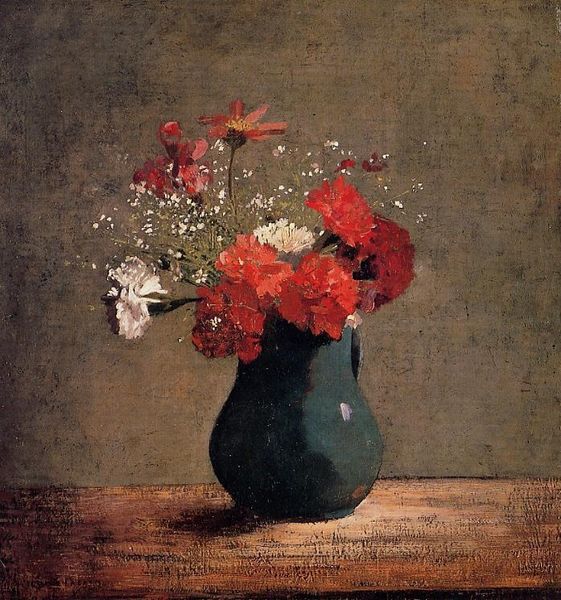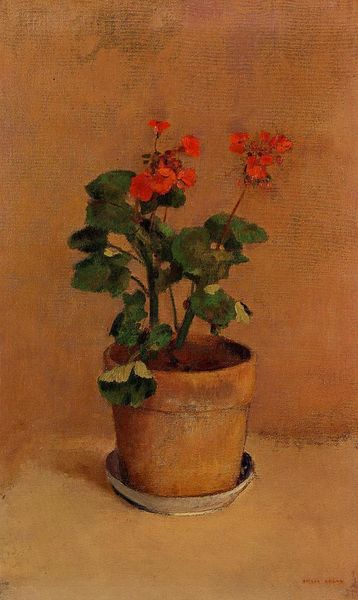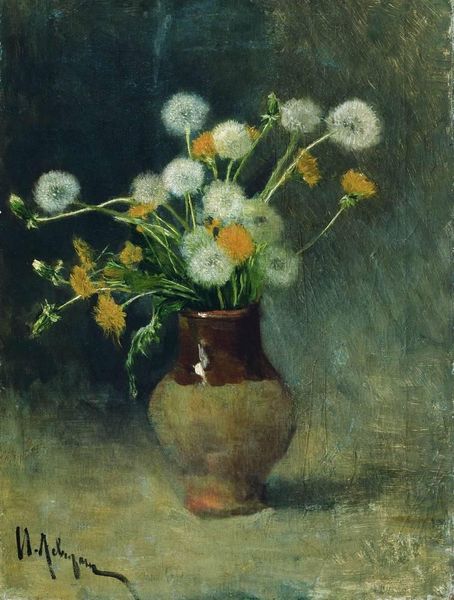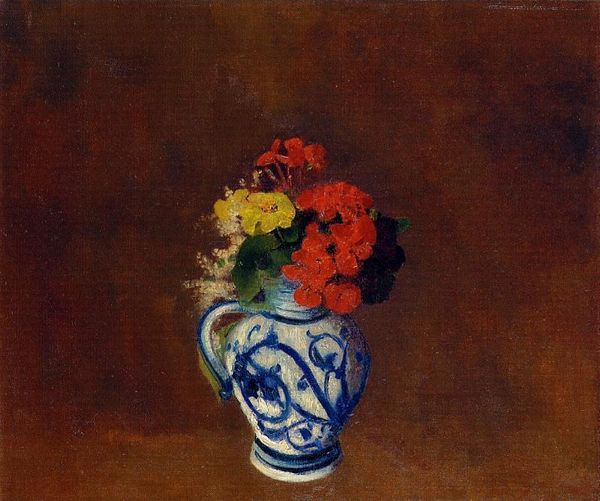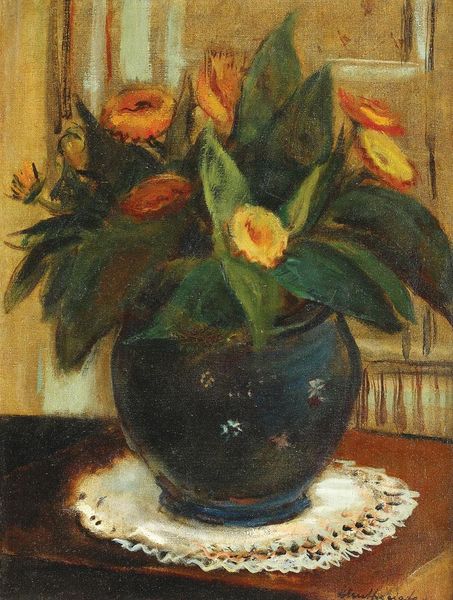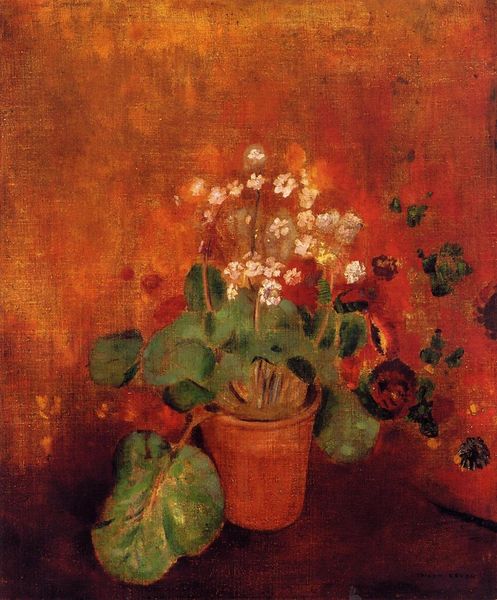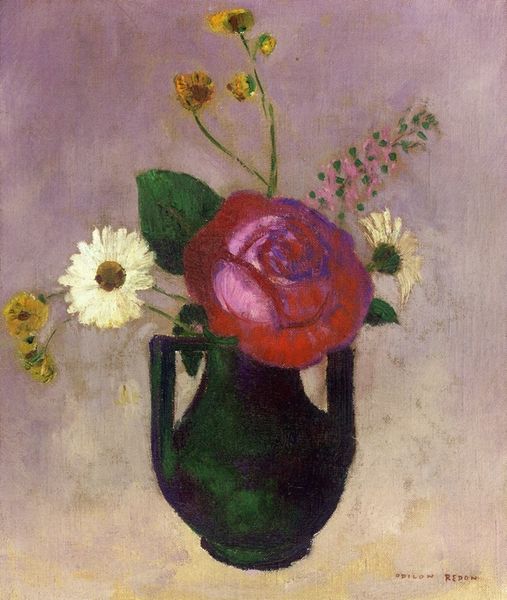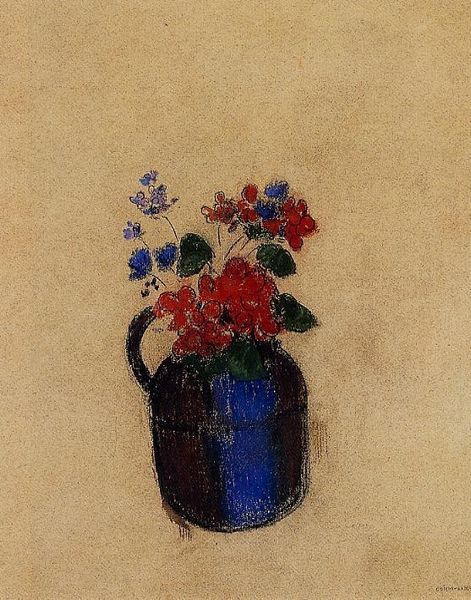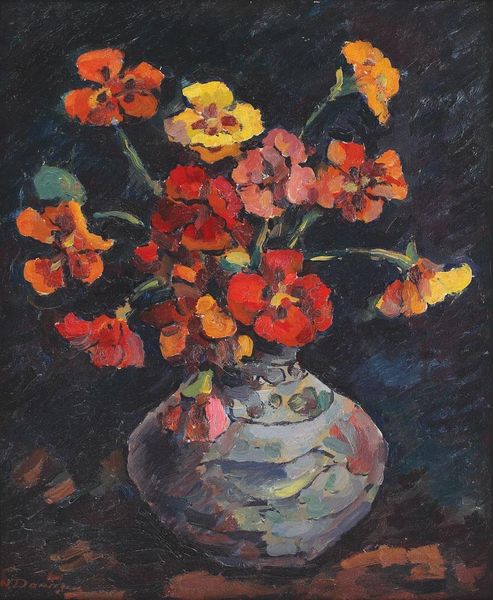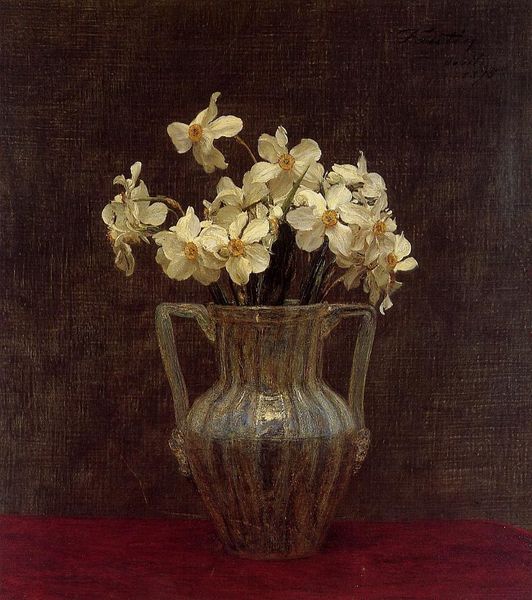
oil-paint
#
still-life
#
impressionism
#
oil-paint
#
landscape
#
oil painting
#
post-impressionism
#
modernism
Copyright: Public domain
Curator: Before us we have "Pitcher of Flowers" by Odilon Redon, created in oil paint, it's held in a private collection. Editor: My first impression is of somber stillness. There’s something quite melancholic about this modest bouquet emerging from near darkness. Curator: Indeed. Notice how Redon has structured the composition, building from the solidity of the brown pitcher to the ephemeral quality of the flowers. The forms possess an almost palpable weightiness and how they relate to the shadowy background and subdued table creates a mood through placement. Editor: This placement, I think, gives clues to understanding it more broadly. The shadow, the density of the pitcher contrasted against the lively yet fading flowers makes me think of mortality— a quiet meditation on the passage of time, how all things are born just to meet an inevitable demise, beautifully and tragically held in tandem. I am also intrigued that this was painted during a period of immense change in art where still life was being redefined along distinctly gendered lines with many women gaining visibility in still-life and floral work. Curator: Interesting point. If we closely observe Redon’s technique here, he clearly is engaging in an internal artistic discourse, which we know was also connected to symbolist philosophy that underpinned a certain vision of modernism, he is not overtly presenting one ideal or point of view, this comes from the lack of precise forms or lines. Editor: In that way it invites interpretation, but the flowers, too, cannot be separated from sociohistorical interpretations. A lot of still lifes and depictions of flowers served very distinct, commercial and representational aims for women and the middle class in domestic spaces, where it reflected certain bourgeois ideals around wealth, education, class and taste— the lack of detail to each one is a way of not subscribing to a historical norm. Curator: Perhaps the true substance lies in the interaction of elements: the blurred, hazy background versus the clear, intentional foregrounding of flowers, and of course how form, shape and color interact in terms of material application, with its opaque, impasto application. Editor: Precisely. This pushes it into a space beyond surface observations about pretty flowers to suggest something unsettling about existence—something that feels both personal to the artist and indicative of society at large at this juncture of time. Curator: Ultimately, in Redon’s unique syntax of painting, there remains a tension between visible and invisible forces—that of being and not-being, material presence and intangible suggestion—the space to express internal feelings and questions. Editor: The longer we look, the more these dichotomies become fertile ground for reflecting on broader anxieties about the self, time, and transformation.
Comments
No comments
Be the first to comment and join the conversation on the ultimate creative platform.

